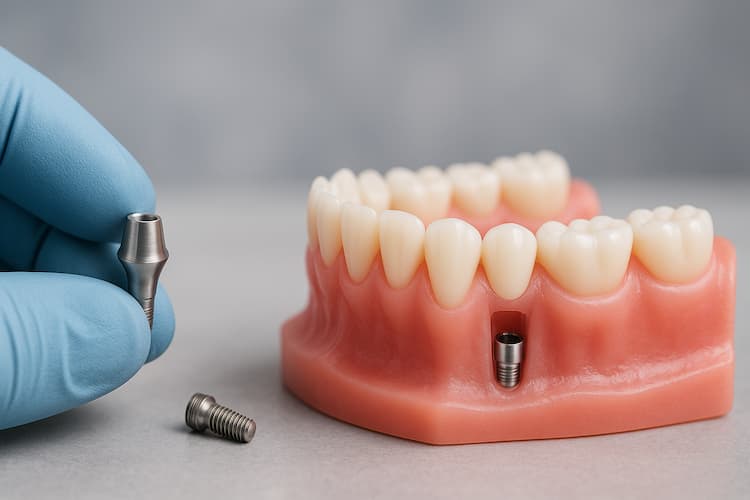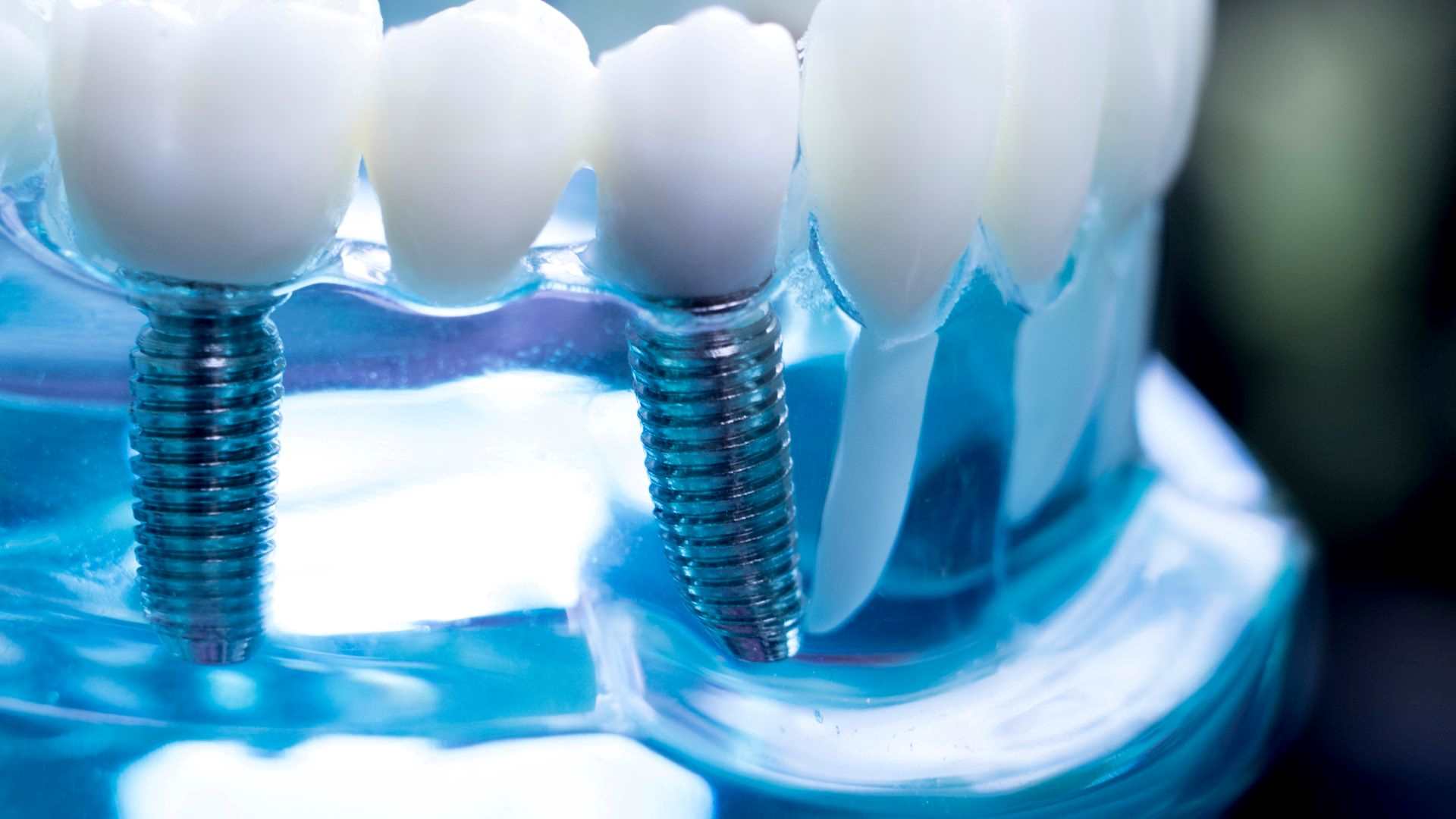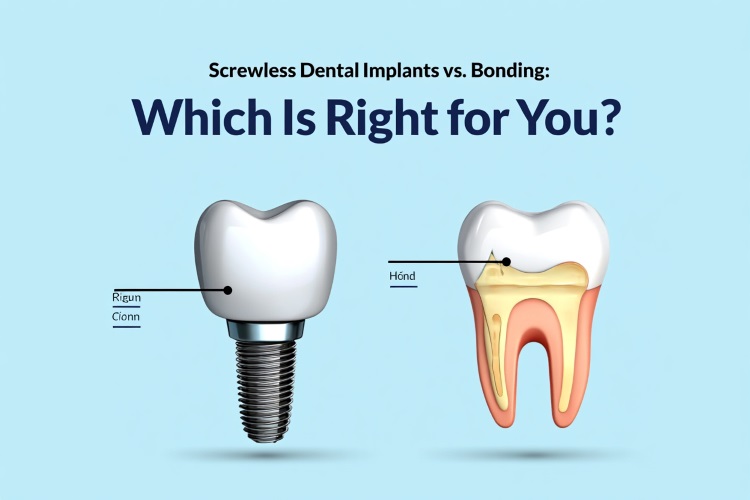If you’re looking for restore or enhance your smile, you’ve likely encountered two powerful options: Screwless Dental Implants vs. Bonding. While both offer remarkable cosmetic results, they represent fundamentally different solutions in terms of durability, procedure invasiveness, and cost.
Her we will cut through your confusion, comparing the permanent, high-tech solution of screwless implants against the rapid, non-invasive fix of dental bonding. We will provide you with the knowledge to make an informed choice that best suits your aesthetic goals and your health tourism plans in Turkey.
The Permanent Solution: Screwless Dental Implants

Screwless dental implants, secured by friction fit or a specialized locking mechanism, represent the gold standard for replacing missing teeth. They provide excellent stability and longevity by integrating directly with the jawbone. This technology is preferred by patients looking for a lifelong fix rather than a temporary aesthetic touch-up.
What are Screwless Implants and How Do They Work?
Unlike traditional implants that use a visible screw to attach the crown, screwless systems use an internal, highly accurate abutment connection. This is often referred to as a “friction fit” or “conical connection”. This two-piece system eliminates the micro-gaps associated with screws, which can reduce bacterial build-up. By protecting the gum tissue, it improves aesthetic results and ensures the implant remains hygienic over decades.
Benefits: Durability, Bone Integration, and Aesthetics
The main advantage of this system is its high stability and longevity. Since the conical connection offers a tighter seal, The main advantage of this system is its high stability and longevity. Since the conical connection offers a tighter seal, the risk of micro-movement is eliminated and zero screw loosening is successfully achieved, which significantly reduces bacterial build-up and ensures better clinical outcomes This design promotes healthier soft tissue around the implant, And thats leading to a more natural-looking gum line. Furthermore, implants stimulate the jawbone, preventing the bone loss that naturally follows tooth extraction
The Lifetime Value and Success Rates
Dental implants have a unique success rates, often exceeding 95% over ten years when performed by experienced specialists. Choosing screwless implants is investing in a solution will lasts a lifetime, replacing the function of a natural tooth perfectly. A steep starting price tag might seem daunting, but the long-term stability means you won’t have to keep spending on replacements every few years .Research shows that patients rate dental implants highly for quality of life improvement.
The Quick Fix: Dental Bonding

Dental bonding is a popular, minimally invasive, and highly affordable cosmetic procedure used to repair minor flaws. It is the right choice for patients who want immediate results without the need for surgery. This method is suitable for younger patients or those with minor dental imperfections.
What is Bonding and Its Application?
The dentist carefully applies the right materials like composite resin directly to the tooth surface after doing the preparation. Then they shape the resin to achieve the desired aesthetic and functional result,
So it won’t be noticeable from the surrounding teeth. The material is hardened instantly using a high-intensity light in a process called curing. The entire process is typically completed in a single , short visit without the need for surgery or anesthesia.
Benefits: Speed, Affordability, and Non-Invasiveness
Dental bonding is the most conservative choice as it requires very little removal of the original tooth enamel. This preserves the maximum amount of natural tooth structure. It is significantly faster and far less expensive than implants or crowns, making it an excellent solution for cosmetic touch-ups. It provides immediate aesthetic results with minimal discomfort or recovery time.
Durability Limitations and Maintenance
The primary limitation of bonding is its durability. Composite resin is not as strong as natural enamel or porcelain, making it susceptible to chipping and staining over time. The expected lifespan of bonding is typically 5 to 10 years, after which it may need repair or replacement. Patients must avoid chewing hard foods and reduce consumption of staining agents like coffee and red wine to maximize its lifespan.
Making the Right Choice: Factors to Weigh
The decision between a permanent implant solution and a reversible bonding procedure depends entirely on the degree of repair needed. You must consider your long-term goals and your travel timeline. While one offers a quick fix, the other offers a foundational change to your dental health.
Extent of Damage and Longevity Needs
Bonding is ideal for cosmetic issues: small chips, minor gaps, or surface stains. Implants are mandatory for replacing missing teeth or when the tooth structure is severely compromised and cannot be saved by other means. If you need a permanent solution to last 20+ years, implants are the superior investment. If you need a temporary fix or minor adjustment, bonding is adequate.
Cost vs. Lifetime Value (The Turkey Advantage)
While dental bonding is cheaper upfront, its need for replacement every 5-10 years can make the recurring cost higher over time. Dental implants, though a larger initial investment, offer lifetime value. For clients traveling to Turkey, the cost of implants is often 50-70% lower than in Western Europe or the US. This makes the lifetime-value option highly accessible to international patients.
Procedure Timeline and Recovery
Bonding is a single-visit procedure (30-60 minutes). Implant placement requires multiple visits over several months (often 4-6 months) to allow for osseointegration or bone fusion. This timeline is vital for medical tourists to plan their trips effectively, often requiring two short trips or one extended stay. Proper planning ensures the long-term success of the surgical procedure.
screwless dental implants vs bonding:
| Feature | Screwless Dental Implants | Dental Bonding |
| Primary Goal | Permanent replacement of a missing tooth. | Cosmetic repair of minor flaws (cracks/chips). |
| Durability | Lifetime (20+ years with proper care). | 5 to 10 years (may require touch-ups). |
| Procedure Time | 4 to 6 months (requires healing/multiple visits). | 30 to 60 minutes (single visit per tooth). |
| Invasiveness | Surgical placement into the jawbone. | Non-invasive; usually no surgery or anesthesia. |
| Strength | High; functions exactly like a natural tooth root. | Moderate; prone to staining or chipping over time. |
| Cost in Turkey | 50-70% lower than Western countries. | Highly affordable upfront cost. |
Day Sample Itinerary: Your Smile Journey in Turkey
This timeline is specifically designed for medical tourists managed by aestheticairways to ensure a balance between clinical care and a relaxing vacation.
Day 1: Arrival and VIP Transfer
Arrive in Turkey and receive a private transfer to your hotel.
Settle in and prepare for your initial consultation.
Day 2: Consultation and Treatment Planning
Visit the clinic for 3D imaging and a physical exam.
Finalize the choice between screwless implants or bonding based on dental health.
Day 3: Procedure Day
For Implants: Surgical placement of the post into the jawbone.
For Bonding: Sculpting and curing of the resin in a single visit.
Day 4: Rest and Recovery
A quiet day to ensure the healing process begins correctly.
Minor adjustments can be made if you chose bonding.
Day 5: Cultural Exploration
Enjoy a light tour of local historical sites or a Bosphorus cruise.
This downtime is essential for international patients to relax during recovery.
Day 6: Final Check-up
Return to the clinic for a post-procedure evaluation.
Review oral hygiene instructions and maintenance for longevity.
Day 7: Return Flight
Private transfer back to the airport.
Depart with a restored, confident smile and a personalized follow-up plan.
Why Turkey is the Global Leader in Dental Excellence
Turkey has emerged as a premier destination for dental tourism, combining luxury hospitality with high-end medical technology. The country’s clinics are equipped with the latest 3D imaging and CAD/CAM technology for precise implant placement. Furthermore, Turkish dentists are often internationally trained and fluent in multiple languages to accommodate foreign patients. Choosing Turkey allows you to receive premium screwless implants for the price of standard treatments in other countries..
The Investment in Your Confidence
The choice between Screwless Dental Implants and Bonding boils down to permanence versus simplicity. If you seek a lifetime restoration that fully replaces a missing tooth and preserves jawbone health, the implant is your ultimate investment. If you need a fast, non-surgical touch-up for minor cosmetic flaws, bonding is an excellent tool. Ready to make the choice and experience professional dental excellence abroad?
When visiting our clinics in Turkey, Be prepared to discuss your long-term aesthetic goals and any medical history with your specialist to ensure the best treatment plan. We also suggest arriving a day early to acclimate and enjoy the local hospitality before your procedure begins. Our team at aestheticairways will be with you every step of the way to ensure a seamless experience.
Frequently Asked Questions (FAQs)
Q1: Is the “Screwless” Implant System Truly Better than Traditional Screwed Implants?
Yes, the screwless system offers superior aesthetics because there isn’t any risk of a screw hole showing through the crown. It also eliminates the mechanical failure of screws loosening over time.
Q2: Will Bonding Match the Color of My Other Teeth Perfectly?
Modern composite resins come in a wide variety of shades. Your dentist will match the resin to your natural teeth, ensuring the repair is invisible to the naked eye.
Q3: Why is Turkey a top destination for dental implants and bonding?
Turkey offers a unique combination of highly skilled surgeons and significantly lower overhead costs. And that’s allows patients to save up to 70% while receiving care in world-class facilities.
Q4: If I get bonding now, can I get implants later?
Absolutely. Bonding is a conservative approach that leaves your bone structure intact. If you decide to upgrade to a permanent implant later, the transition is straightforward.

